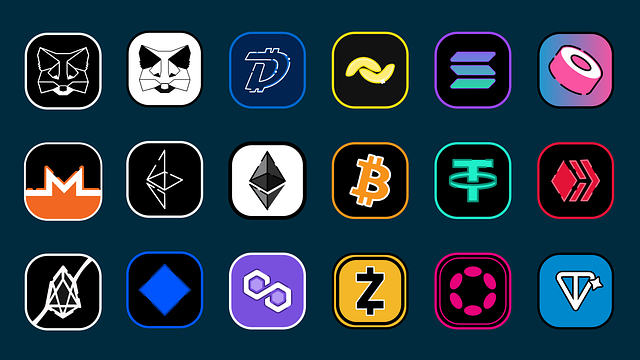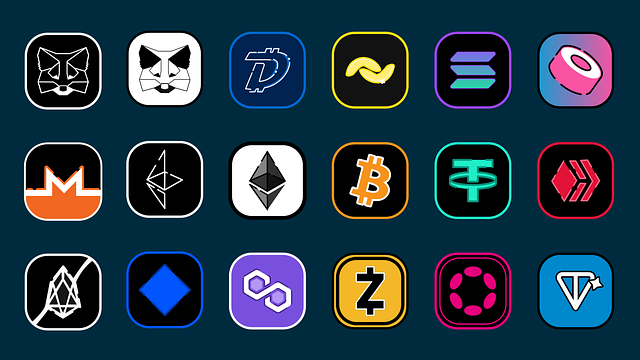Solana's standout architecture combines distributed ledger tech and proof-of-stake consensus for high-volume transactions with low fees. Its decentralized network of nodes ensures transparency, security, faster processing times, and reduced costs. Innovative features like sharding and Proof-of-History (PoH) mechanism boost throughput, reduce congestion, and enable lightning-fast smart contract execution. Solana's fee structure promotes cost-effectiveness, making it ideal for DeFi, gaming, and high-throughput applications. Real-world adoption demonstrates its exceptional scalability, with examples in DeFi and Play-to-Earn (P2E) games. With a dedicated community driving innovation, Solana is poised to expand its influence in the dynamic blockchain and cryptocurrency landscape.
“Solana has emerged as a powerful blockchain network, offering unparalleled scalability for high-performance applications. This article delves into the intricate mechanisms behind Solana’s success, exploring its decentralized architecture and how it utilizes innovative solutions like sharding. We’ll uncover the role of Solanart nodes in maintaining network efficiency and reducing transaction fees. By examining smart contract optimizations and fee structures, we’ll demonstrate why Solana is a game-changer for developers, with real-world use cases showcasing its potential to revolutionize the blockchain landscape.”
- Understanding Solana's Architecture: A Decentralized Approach
- The Role of Solanart Nodes in Ensuring Scalability
- How Sharding Enhances Throughput and Reduces Costs
- Smart Contract Execution on Solana: Optimizations for Speed
- Fee Structure: Unlocking Low-Cost Transactions
- Real-World Use Cases: Proving Solana's Scalability
- The Future of Solana: Continuous Improvement and Growth
Understanding Solana's Architecture: A Decentralized Approach

Solana’s architecture is a masterpiece of decentralized technology, designed to handle high-volume transactions while maintaining low fees. At its core, Solana leverages a unique combination of distributed ledger technology and a proof-of-stake consensus mechanism. This approach ensures that each node in the network contributes to validating and securing transactions, creating a robust and efficient system.
By contrast with traditional centralized networks, where power is concentrated, Solana’s decentralized nature allows for greater transparency and security. Every participant in the network plays a role, resulting in faster processing times and reduced costs. This innovative design makes Solana a standout option in the blockchain space, particularly for applications that demand rapid and cost-effective transactions—a feature that has garnered significant attention and adoption across various industries, especially in the fast-paced world of cryptocurrency and Web3 technologies.
The Role of Solanart Nodes in Ensuring Scalability

Solana’s scalability is a result of its innovative architecture, but it’s the network’s nodes that truly enable this high-performance system. Each Solana node acts as a crucial participant in the blockchain’s ecosystem, contributing to its overall efficiency and speed. These nodes are responsible for validating transactions, creating blocks, and maintaining a copy of the entire transaction history, known as the blockchain.
By decentralizing this process across numerous nodes, Solana achieves remarkable throughput. With more nodes joining the network, the workload is distributed, allowing for faster processing of transactions and reducing congestion. This peer-to-peer structure ensures that no single entity controls the network’s performance, making it highly resilient and scalable, key attributes in the fast-growing world of blockchain technology and cryptocurrencies like Solana.
How Sharding Enhances Throughput and Reduces Costs

Solana’s innovative architecture incorporates sharding, a partitioning technique that dramatically enhances throughput and reduces costs. By breaking down the blockchain into smaller, manageable units called shards, Solana allows for parallel processing of transactions. Each shard operates independently, enabling faster confirmation times and increased capacity as the network grows. This approach ensures that no single point of congestion slows down the entire system.
Moreover, sharding contributes to Solana’s cost-effectiveness. With multiple shards handling transactions concurrently, the overall load on the network decreases, leading to lower fees. This mechanism makes Solana an attractive option for developers building decentralized applications (dApps) that require high transaction speeds and affordable infrastructure.
Smart Contract Execution on Solana: Optimizations for Speed

Solana’s architecture is designed to handle smart contract execution with remarkable speed and efficiency, setting it apart from many other blockchain platforms. At its core, Solana utilizes a unique consensus mechanism called Proof-of-History (PoH), which provides a secure and fast way to order transactions. This mechanism allows the network to process a vast number of transactions per second, enabling high throughput for smart contract deployments.
By leveraging PoH, Solana achieves optimal execution times for smart contracts. Each block in the blockchain contains a sorted list of all transactions, ensuring that they are executed in chronological order. This ordered execution facilitates seamless interactions within smart contracts, reducing potential delays and bottlenecks commonly found in other networks. As a result, developers can build applications on Solana with low latency, making it an attractive choice for decentralized finance (DeFi) and gaming use cases where speed is of utmost importance.
Fee Structure: Unlocking Low-Cost Transactions

Solana’s fee structure is designed to promote low-cost transactions, making it an attractive option for developers and users alike. Unlike some other blockchain networks that charge high fees, Solana keeps transaction costs remarkably low by efficiently managing its resources. This is achieved through a unique combination of its proof-of-stake consensus mechanism and optimized smart contract functionality.
By utilizing a proof-of-stake system, Solana reduces the energy consumption and computational power required for each transaction, which translates to lower fees. Additionally, its native token, SOL, serves as fuel for transactions, providing an economic incentive for validators to process blocks quickly and effectively. This results in fast confirmation times and minimal transaction fees, making Solana a game-changer in the world of blockchain technology, especially for high-throughput applications.
Real-World Use Cases: Proving Solana's Scalability

Solana’s scalability is not just theoretical; it has been proven in real-world use cases, showcasing its ability to handle high transaction volumes and maintain low fees. One notable example is its application in decentralized finance (DeFi) platforms, where rapid and cost-effective transactions are paramount. The blockchain can process thousands of transactions per second, enabling fast settlement times for loans, trades, and other financial activities.
Additionally, Solana has gained traction in the gaming industry as a platform for building and deploying Play-to-Earn (P2E) games. These games require seamless and quick interactions, often involving asset transfers and smart contract executions. The network’s low fees and high throughput make it an attractive choice for developers looking to create engaging, scalable, and economically viable gaming experiences on blockchain technology.
The Future of Solana: Continuous Improvement and Growth

The future of Solana holds immense potential as it continues to evolve and innovate, solidifying its place in the blockchain landscape. With a strong emphasis on continuous improvement, the Solana community is dedicated to enhancing its capabilities, especially in areas like scalability and security. This ongoing development ensures that Solana remains a competitive force in the rapidly growing crypto market.
As technology advances, Solana’s architecture will likely adapt and grow, catering to the ever-increasing demands of decentralized applications (dApps) and blockchain users worldwide. With its ability to process transactions at an astonishing speed and low fees, Solana is poised to attract even more developers and users, further expanding its reach and influence in the blockchain community.
Solana’s innovative architecture, centered around decentralized nodes and sharding, has enabled it to achieve impressive scalability. By optimizing smart contract execution and implementing a unique fee structure, Solana ensures low-cost transactions while maintaining high throughput. The real-world applications of this technology prove its viability and potential for growth. As the Solana ecosystem continues to evolve, we can expect further improvements, solidifying its position as a leading blockchain platform for decentralized solutions.








Leave a Reply